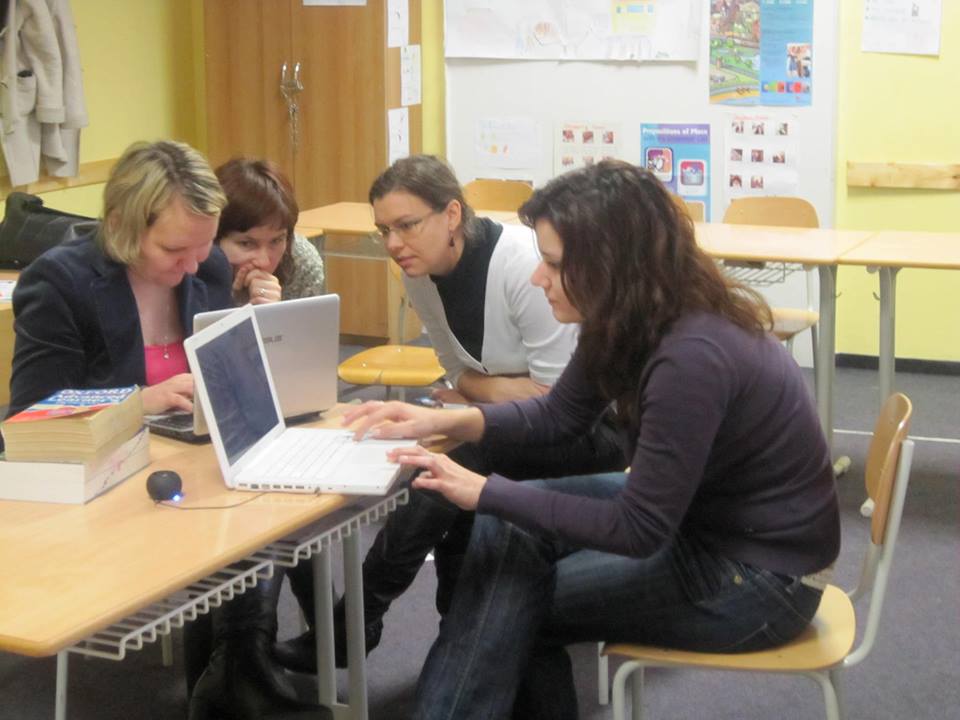
I have regularly taught advanced students who are extremely competent speakers, have a very wide vocabulary and a good knowledge of grammatical structures, but who have trouble understanding when native speakers produce fast speech. This was a particular problem when I was teaching in the UK, where some of my students were reluctant to speak to people in the streets when we did tasks such as interviews, as they were worried they wouldn’t understand and would have to keep asking for their interviewee to repeat themselves.
To combat this fear and to improve students’ confidence, I think it’s important to focus on the features of connected speech with our students as early as possible. I’ve noticed that many of my students are unaware of features such as:
- Elision: the ‘loss’ of sounds. For example, the middle ‘e’ disappearing from ‘vegetable’, or ‘d’ disappearing in ‘black and white’.
- Intrusion: the ‘addition’ of sounds, following a predictable pattern. The sounds which are normally added are /r/, /w/ and /j/. For example, ‘I /j/ agree’.
- Linking: final consonant + initial vowel are linked, unless there is punctuation that stops it. For example: ‘there_is’ has a link, but ‘linked, unless’ is not.
- Weak forms: there are a set of ‘grammar words’ which appear as weak forms when unstressed and not in the final position in a sentence. For example, ‘been’ is weak in ‘He’s never been there.’ but not in ‘Have you been?’ This is made even more difficult when a series of these forms appear together, such as ‘What do you want?’, which can sound like ‘Whaddaya wan?’
There are other features of connected speech, but this is normally plenty to start off with. I normally refer to them using the terms I’ve put into quotation marks to avoid overloading students with unnecessary metalanguage.
Here’s one sequence of activities I’ve used successfully with my advanced students:
- Introduce students to the concepts listed above, perhaps simply by explaining them, or alternatively using some of the activities detailed at the bottom of this post. You can also
 find good activities in many resources by Mark Hancock.
find good activities in many resources by Mark Hancock. - Choose a clip of fast fluent speech. I used one called ‘East Street’.
- In class, deal with the clip as you would any listening, to ensure students understand the content.
- Put students into groups of three with a computer each. You could ask them to bring their own tablets/laptops. They could also handwrite it, but they’ll probably want to change it a lot, so typing is easier and a lot neater!
- For a one-minute extract from the longer clip, get students to transcribe exactly what the people are saying. They can play it as many times as they like. Remind them to consider the aspects of connected speech you have already introduced.
- Ask another group to check the transcription against the original.
- When you check the transcription, start by underlining the problem areas, and encourage students to self-correct. You could also give them clues about what to listen for, such as linking or elision.
- Correct the final version for them, highlighting anything you’ve changed so they can listen again.
I did this with two advanced level groups, and it took all of them about 45 minutes to transcribe a 1-minute section of East Street. It was worth it though, as they became much more aware of connected speech and they told me they felt more confident about listening after this lesson.
Further reading
A few activities on my blog dealing with some of these aspects:
- Weak forms
- Features of connected speech in a song
- Other things you can do to help students deal with ‘real-world’ listening
Thank you for sharing these tips